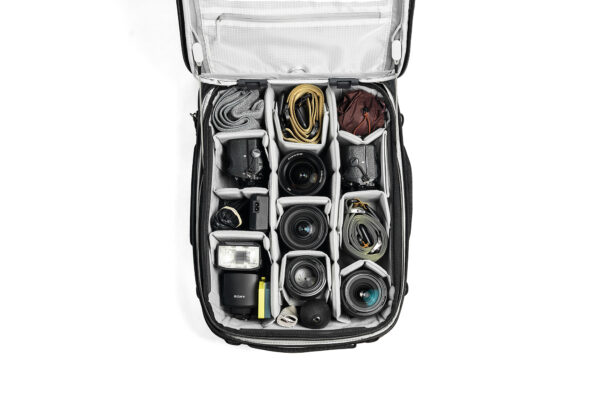You don’t have to be a professional photographer to get your products noticed. In this article, you’ll learn, step by step, how to take beautiful product photography.
How can I do product photography at home?
Most eCommerce store owners know the basics of taking product photos with their devices: find a white background and some natural light, choose the highest quality setting and resolution on your device, and click! You have a product photo. This is a great start.
But there are some additional tools and accessories that can greatly enhance your photos and showcase the value of your product to let buyers imagine it in their lives.
- Select a room with good lighting
First, find a room in your home with a well-lit window. The bigger the window, the more natural light you’ll have to bring your product to life.
- Choose your device
Most smartphone cameras these days make great DSLR alternatives for product photography. The higher the number of megapixels, the better your product images will come out.
- Get a mini tripod
A mini tripod will reduce camera shake and help standardize photo angles and styles for your product line.
- Set up your backdrop
Get a clean and consistent look and eliminate distractions by placing your white backdrop behind your product. You need a table to place your backdrop.
You can use scotch tape to hold your backdrop or stick your product to the backdrop. If you don’t have scotch tape, sticky tack is also a great solution.
Always keep your backdrop white. A white backdrop reflects natural light onto the product and gives you evenly lit photos. This makes the editing process much easier if you want to remove the background.
- Use white bounce boards
Bounce boards help reduce strong shadows and create a more balanced lighting environment to reveal the best details of your product.
Now that you have your setup ready, you can take your product photos with vivid details.
What do I need for basic product photography?
There are many techniques for shooting successful product photography, but the one I’m going to show you is commonly known as the window light technique.
There’s no need to spend a large amount of your budget on high-tech equipment, so keep an open mind and try not to overspend on gadgets that do the same job of lighting up your product.
What you’re going to need:
- A camera
- A tripod
- A white background
- White bounce cards made of foam board
- A table
- Tape
- The right room with a window
What camera settings for product pictures?
It’s important to understand how to get the best product images while accurately portraying the product you’re shooting.
There are many tricks that professionals use to really highlight product features, but they’ll tell you that it’s the camera settings that really make the difference.
1. Using Manual Mode
Shooting in manual mode is one of the fastest ways to improve your photography. This will allow you to set your preferred aperture, shutter speed, and ISO.
When you set the camera to automatic mode, the camera makes that decision for you, and while you may think it’s more convenient, it rarely gives you the perfect exposure. Rather, it gives you the camera’s best guess, and that’s why it’s best to shoot in manual mode if you want to get those settings right.
2. Shoot in Raw
Shooting in raw is important, because most of the time, you’ll be doing some post-production processing, and the raw format gives you the most flexibility with that. You can restore the photo without losing any data and it gives you a much wider color spectrum, which is very important for your images when going to print.
3. ISO
ISO stands for International Standards Organization, and it controls the sensitivity of your camera sensor to available light. The lower the number, the less sensitive it is, and that means you’ll need more time to take the shot. If you’re shooting in low light or you want to use a fast shutter speed, you’ll need to increase the ISO, but if you go too high, your images will have a lot of noise which means they’ll look grainy.
4. Aperture
The aperture is the opening in your camera that lets light in. The wider the aperture, the greater the amount of light, and the narrower the aperture, the less light enters.
5. Shutter speed
Shutter speed refers to how quickly the shutter opens and closes. The value is represented in ‘stops’ of light and is measured in fractions of a second. A higher shutter speed can help freeze a subject while a slower shutter speed can cause motion blur.
6. White balance
To ensure that whites and colors are rendered correctly in your product photos, you need to set the white balance. This will help avoid color casts in the white areas of your photo and ensure that the colors in the photo are true to what you see. For example, with product photos taken in natural light, you may get a blue tint in white areas.
7. No flash
If you have to use artificial light for the product, you’ll want a continuous light rather than a flash. Flash lighting introduces some challenges to exposure. If it’s absolutely necessary and you know what you’re doing, it should be an off-camera flash tool rather than an on-camera flash. If you can avoid using Flash, that’s fine.
How do I take good photos of products to sell online?
- Select a smartphone camera with 12 megapixels or more for tang your product photos.
- To reduce the camera shake, shoot from a tripod.
- You can select a room that has natural light from a window.
- Bounce light using a foam board to soften shadows.
- You can use a sweep or close-up shots to highlight product features.
- Shoot at different angles and image sizes.








